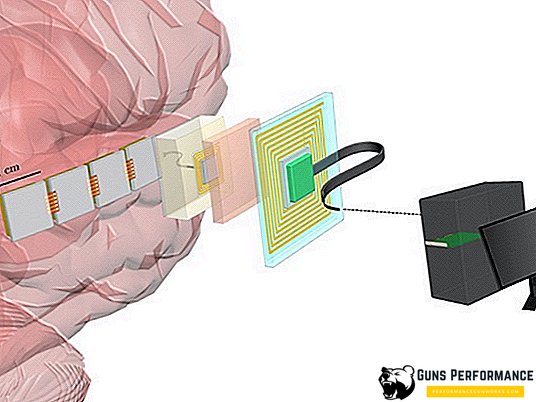Marshal McLuhan wrote: "Humanity is enchanted at the sight of any expansion of itself." Technologies expand the person, allow to see, before invisible, to hear, before not heard. The arrival of electricity, the creation of a computer, the introduction of the Internet are all turning points. Subsequent revolutions are being prepared in the field of neurotechnology.
Extending the body
Ten or twenty years ago, science fiction writers talked more often about the interaction between man and the computer at the neuro level. Now the technology is already under development. Thoughts about her enchant the mind, because the synthesis of a living organism and a computer expands the possibilities of the human body to previously unthinkable limits.
Especially interested in this military industry. So the US Department of Defense (DARPA) allocated $ 65 million for their development ...

The first steps
The master of loud statements Ilon Mask also showed interest in neurotechnology. Electric cars, launch vehicles, Hyperloop One, a project for the colonization of Mars, and now the neural computer interface Neuralink - a network of electrodes that will be attached to the cerebral cortex layer and the limbic system and provide communication between humans and the computer. The project looks much more realizable than the plans for the development of the red planet, and will find application in military developments.
Nevertheless, DARPA projects are of more interest because of the investment.
So, the US Department of Defense allocated money for the development of the NESD (Neural Engineering System Design) program, which were distributed among six performers:
- Paradromics - A startup that won a government grant, will develop the Neural Input-Output Bus (NIOB). This is a grid of microwires with a diameter of 20 μm, which will stimulate neurons and remove information from them;
- Fondation Voir et Entendre (Foundation for Vision and Hearing) undertook the development of an interface for communication between the neurons of the visual cortex and the LCD display with a video camera. This will solve the problem of poor vision;
- The John B. Pierce Laboratory also focused its research on visual issues. They are engaged in the creation of an interface that uses modified neurons with the property of bioluminescence and hypersensitivity to optogenetic stimulation;
- Scientists from the University of California at Berkeley are developing a holographic microscope that can record and modulate the activity of a million neurons. Its creation will allow a better study of the human brain. They are also engaged in the creation of a coding model that would allow to predict the reactions of neurons to visual and tactile stimuli. All this is planned to be used for the treatment of blind and prosthetic control;
- At Brown University, neural speech processing decoding techniques are being investigated. Sensory interface that is implanted on the surface or inside the cortex;
- And the last performer is Columbia University, which creates a bioelectric interface that transmits a signal to the visual cortex of the brain.

A look into the future
The main task of Darpa called the creation of a neuroimplant capable of providing communication between humans and computers. The merging of people and machines is an ambitious task that will give the military industry new development vectors.
At first, scientists and engineers of the project will create the latest equipment that will transfer data from computer to person and back. That is, their task is to learn how to transform electrochemical reactions of the brain into a binary code that underlies the operation of computers, and vice versa, translate information encoded in zeros and units into the language that the brain operates on. Initial tests will be conducted on animals and living cells grown in laboratories. In the future, the program will proceed to the study of the possibilities of introducing equipment into a person and legal problems, the solution of which will allow conducting experiments on people.
Such interfaces allow a person to see in the infrared spectrum, to see the radiation of heat from living and non-living bodies. Thus, it is possible to build a thermal imager for a person, which will be used by special services.
The live transmission of computer data to the brain will allow for the virtual training of the military. It will be like a game that adapts to the thoughts and feelings of a person and is constantly changing.
In addition, neural interfaces will lead to a new level the creation of artificial prostheses, which can successfully be used in military medicine and in increasing the physical capabilities of soldiers.












